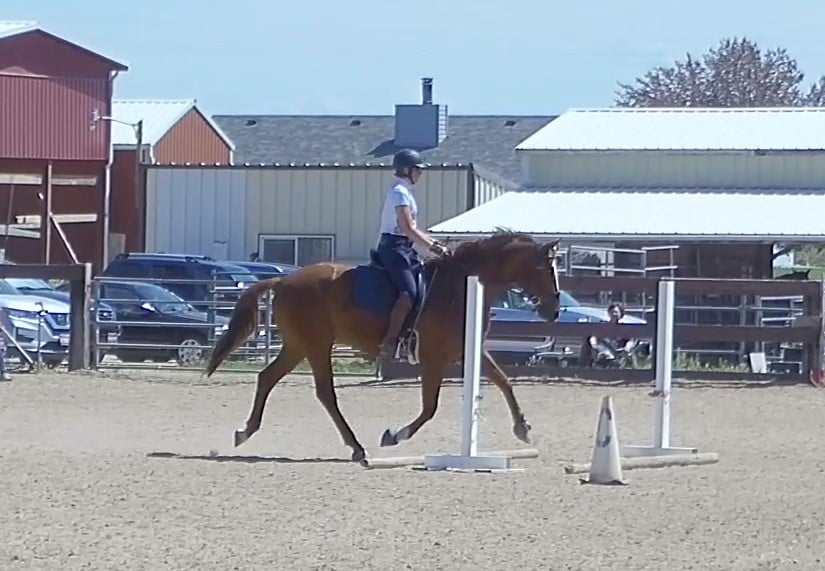Hiiiiii! Kind of a general question for you all - do you ever ride your weaker, new to dressage horses in a jump saddle instead of dressage to stay off their back since they might have weaker back muscles and not be able to carry someone in that deeper seat? Or do most dressage people just start right from the get go in a dressage saddle?
To me the obvious answer to this question would be like, in an ideal world you’ve built up their muscles and topline with a lot of ground work before you even sit on their back, but I feel like that still might be a different kind of strength than what a horse experiences with a rider on their back, and you do eventually have to get on and ride.
Or maybe they’re fine at the walk and trot, but then do you ever shorten your dressage stirrups to try to like do a little two point during canter work while they’re still building up fitness, or maybe just keep the canter work short until you feel like they should be strong enough to hold your seat in the canter?
How do you know if your seat might be too much for them to carry right now and when is the right time to start riding with a deeper seat? Or is it that if your seat aid is well-educated and well practiced enough, any weak, green horse should be just fine carrying it and if they can’t then you need to just keep your seat out of the saddle because it’s too sloppy or not fine-tuned enough as an aid?
I hope this isn’t a dumb question!  LMK your thoughts!
LMK your thoughts!



 my jump saddle is old and hard and needs to be reflocked, but life has gotten in the way and I’m probably going to have to put that off a little bit longer. In the meantime when I’m primarily riding in my dressage saddle, I just want to make sure that I’m not negatively influencing my horse’s movement and ability to build up strength and fitness if she’s still not strong enough carry my weight in that deeper dressage seat.
my jump saddle is old and hard and needs to be reflocked, but life has gotten in the way and I’m probably going to have to put that off a little bit longer. In the meantime when I’m primarily riding in my dressage saddle, I just want to make sure that I’m not negatively influencing my horse’s movement and ability to build up strength and fitness if she’s still not strong enough carry my weight in that deeper dressage seat.